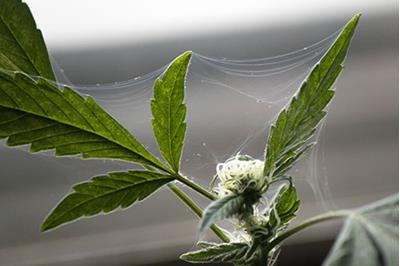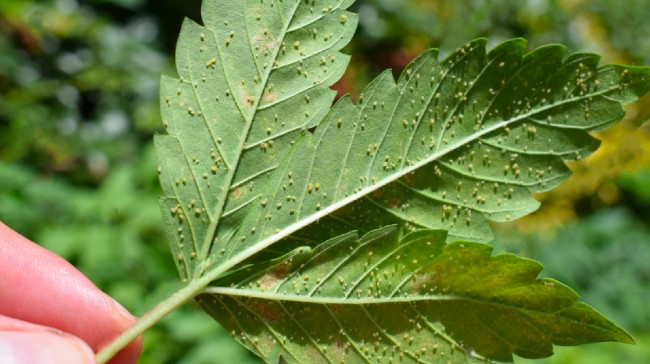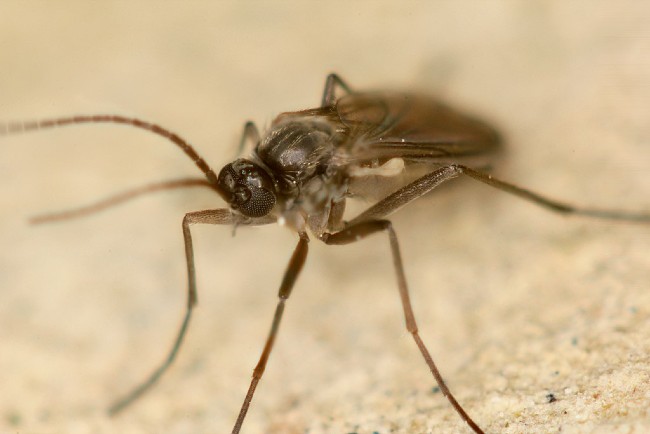
Wednesday February 10, 2021
By Erin Hiatt
 Growing
Growing
Experienced and novice cannabis growers alike understand that pests can ruin a crop, no matter how well watered, fed, or tended. One of the keys to making sure that your plants grow into healthy, robust, and consumable cannabis is to keep a close eye on any pests that might infiltrate your grow, then take the appropriate steps to eradicate them without ruining your garden. Not only will it help keep the plants alive, thriving plants have more energy to produce trichomes and terpenes, making for better bud
Let’s take a look at some common pests found on cannabis plants, how to identify them, and lastly, get rid of them for good. With just a little maintenance and vigilance, your cannabis garden can be pest-free.
Common Pests Found on Cannabis Plants
According to the Smithsonian Institution, there are likely more unclassified insects in the world than classified, and the running guess is somewhere between 2 million and 30 million. Thus, this is by no means a definitive list of bugs that feed on cannabis but should serve as a good starting point for most pest problems.
Caterpillars
Before a caterpillar turns into a beautiful butterfly and flits away, it can be very hazardous to your cannabis plants. You know that book The Very Hungry Caterpillar? Turns out it’s a true story about how caterpillars eat everything in sight, including that tasty cannabis. Caterpillars can be very dangerous because they tend to go unnoticed, especially if they are a borer caterpillar, meaning they burrow into the plant and eat it from the inside out. But even caterpillars on the exterior will nosh away, potentially causing great damage to your plants.
To figure out if caterpillars are ruining your plants, inspect the leaves weekly for holes from feeding, droppings on the leaves that look like tiny black specks, holes, and damage to the stems, and yellowing on upper leaves.
Natural enemies of caterpillars are wasps and praying mantises, and introducing those to the environment could make a difference. These options are typically easier for outdoor grows, but can also work indoors with some preparation. Other interventions include using a product like Bug Blaster spray or neem oil (which you can make at home).
Neem oil use has been controversial in some cannabis circles, as there is a belief among some that it may play a role in CHS (Cannabis Hyperemesis Syndrome), however, no definitive statements can be made without more research. The connection between neem oil and cannabis hyperemesis syndrome has yet to be fully explored or verified, but it’s still good to be aware and to be sure to closely follow usage directions.
Aphids
Even house plants have the occasional plague of aphids. Tiny and red, yellow, black, pale, green, or brown, these bugs can be easy to miss because they cling to the underside of leaves, reproduce quickly, and drain your plant of nutrients. Outdoor grows tend to fare a little better in the battle against aphids since natural predators are present, but indoor plants can be decimated quickly by these teensy pests. Not only do they siphon nutrients away from the plant, they leave a sweet substance called “honeydew” that attracts other insects and turns the leaves black and moldy.

Because that honeydew attracts other pests, if you begin to notice a lot of ants or ladybugs coming around your plants, it’s a pretty good sign that you’re well into an aphid problem. Aphids can be hard to shake, but wasps and ladybugs are natural predators. Nonetheless, you should visually inspect the underside of plant leaves at least once a week. If introducing predators doesn’t ameliorate the problem, there are a couple of natural solutions to get rid of cannabis pests to try, like garlic or tomato leaf water.
Spider Mites
Spider mites are like the supervillains of cannabis pests: uber reproductive, zombie-like in their ability to come back from what you thought was death, capable of spinning webs while eating everything in sight then completely disappearing before turning up again – they’re nearly impossible to spot and even harder to eradicate. Spotting spider mites is difficult because they are minuscule, but doing a daily inspection of both sides of your plant leaves could help to prevent a massive infestation.
Signs of spider mites begins with speckles, then a browning or yellowing of leaves, and premature leaf death.
If any parts of your plant are covered in fine webbing, that’s a sure sign you’re in a bad spot. The best way to avoid mites is to stay vigilant with your leaf inspections. If you do notice signs of mites, try introducing a fan into the environment. Strong air currents make it difficult for mites to breed. Spider mites also prefer temperatures of 60-80 degrees, so experimenting with temperature might also slow an infestation down. Since mites are likely to come back, consider a spray like Azamax or Spinosad to get rid of them for good (again, be sure to follow use directions carefully).
Fungus Gnats
Fungus gnats are just as hungry as caterpillars, but their gourmet meal is from the stem and roots of your plants and not the leaves. Beginning at the topsoil level, both larvae and adults will munch their way down into the root system, badly impact plant drainage, and compromise the structural stability of your plants. However, they’re nearly impossible to spot because they are dark in color, as is soil.

Seeing swarms of gnats near the base of your plant is one sign you’ve got a fungus gnat problem. Other symptoms are stems that weaken and simply fall over, adult plants that start to droop, wilt, spot, or yellow, or plants that stop growing altogether.
Fungus gnats love moist conditions, so keeping the top layer of soil dry is a smart preventative measure. Some other hacks to try include placing a cloth on top of the soil to prevent female gnats from laying eggs or laying a sticky pad near the plant’s base to stick larvae. You could also mix some peroxide and water and spray it around the area of gnat infestation. A common-sense tactic for an indoor grow is to put screens on the windows and the doors closed to keep gnats out.
Why Pests and Bugs Are Attracted to Cannabis
Something to keep in mind about pests, in general, is that they love a monoculture or a space dedicated to growing only one crop. Researchers from the University of California Davis theorize that if an insect makes itself at home in that one crop, it has a large food supply, creating an all-you-can-eat kind of scenario for the pest, making it that much harder to eradicate. As you likely don’t want to introduce other plants into a cannabis garden (for a number of reasons), this issue will always exist to some degree when dealing with weed.
This is why, as mentioned, another option is to introduce other beneficial insects. Not only do they prey on harmful pests, but they are also an excellent chemical-free pest control option. The bugs already want to be there, you’re just bringing them to the dinner table.
The Wrap Up
Identifying pests should be a regular ritual, just like watering and delivering nutrients to your plants. When you keep them pest-free, all that hard growing work will hopefully pay off in healthy and efficacious plants. Once you’ve harvested, you can move on to other fun challenges like doing a proper cure for your cannabis harvest, and how to store your cannabis stash.
How do you deal with pests in your cannabis grow? Share your techniques in the comments!
Photo Credit: ilovegrowingmarijuana (license)







